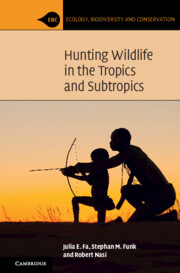General Editor
Michael Usher, University of Stirling
Editorial Board
Jane Carruthers, University of South Africa, Pretoria
Joachim Claudet, Centre National de la Recherche Scientifique (CNRS), Paris
Tasman Crowe, University College Dublin
Andy Dobson, Princeton University, New Jersey
Valerie Eviner, University of California, Davis
Julia E. Fa, Manchester Metropolitan University
Janet Franklin, University of California, Riverside
Rob Fuller, British Trust for Ornithology
Chris Margules, James Cook University, North Queensland
Dave Richardson, University of Stellenbosch, South Africa
Peter Thomas, Keele University
Des Thompson, NatureScot
Lawrence Walker, University of Nevada, Las Vegas
The world’s biological diversity faces unprecedented threats. The urgent challenge facing the concerned biologist is to understand ecological processes well enough to maintain their functioning in the face of the pressures resulting from human population growth. Those concerned with the conservation of biodiversity and with restoration also need to be acquainted with the political, social, historical, economic and legal frameworks within which ecological and conservation practice must be developed. The new Ecology, Biodiversity and Conservation series will present balanced, comprehensive, up-to-date and critical reviews of selected topics within the sciences of ecology and conservation biology, both botanical and zoological, and both ‘pure’ and ‘applied’. It is aimed at advanced final-year undergraduates, graduate students, researchers and university teachers, as well as ecologists and conservationists in industry, government and the voluntary sectors. The series encompasses a wide range of approaches and scales (spatial, temporal and taxonomic), including quantitative, theoretical, population, community, ecosystem, landscape, historical, experimental, behavioural and evolutionary studies. The emphasis is on science related to the real world of plants and animals rather than on purely theoretical abstractions and mathematical models. Books in this series will, wherever possible, consider issues from a broad perspective. Some books will challenge existing paradigms and present new ecological concepts, empirical or theoretical models, and testable hypotheses. Other books will explore new approaches and present syntheses on topics of ecological importance.

